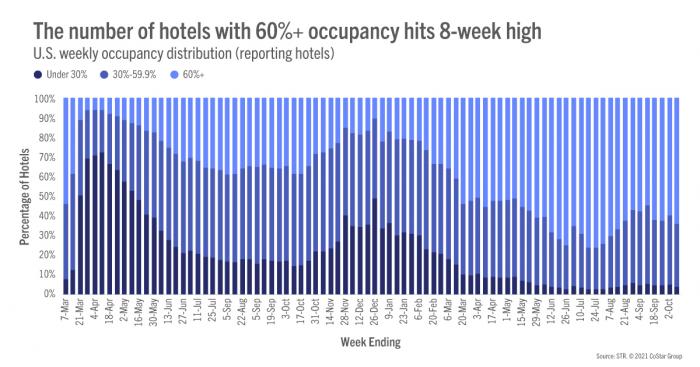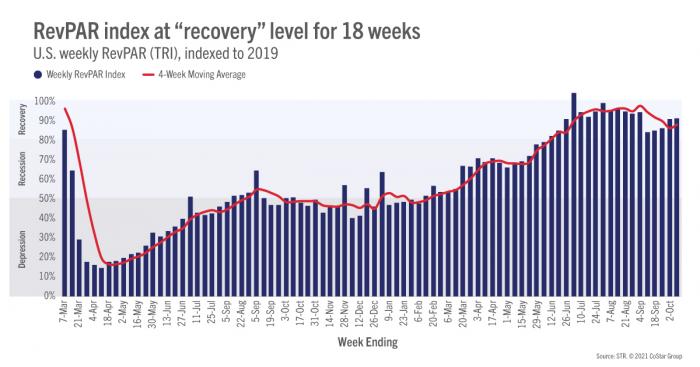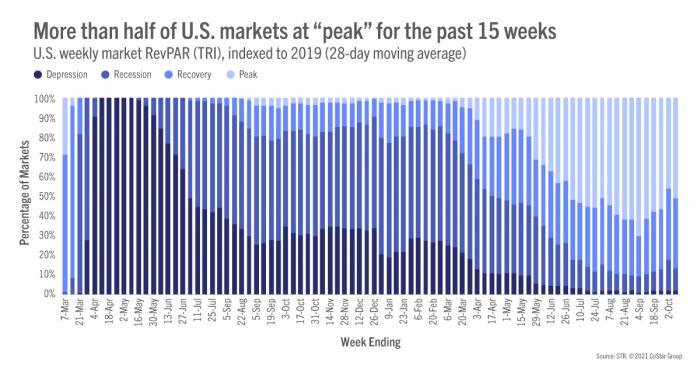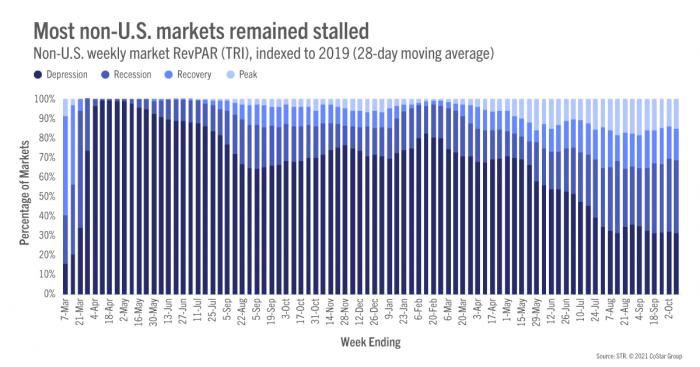Previous MRM versions: 25 September | 02 October
Week ending 9 October
The latest week of data in the U.S. confirms that the previous seven-day period was indeed the lull before the storm. Occupancy for 3-9 October rose 2.2 percentage points to 63.9%, which was the country’s highest level since mid-August. STR’s School Breaks Report showed that first full week of October as the one with the most students out for fall break (22%). As a result, destination locations saw solid gains, especially during the weekend, which is similar to previous leisure travel periods. Demand increased in 70% of the 166 STR-defined markets, led by Orlando, where occupancy advanced 9.3 percentage points week on week. With 47,000 rooms still temporarily closed, U.S. total-room-inventory (TRI) occupancy was a bit less at 61.6% for the week.




